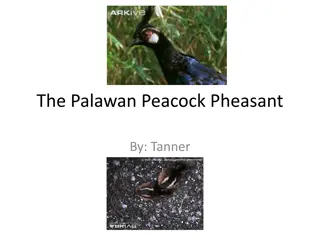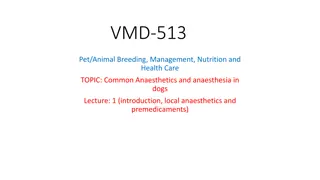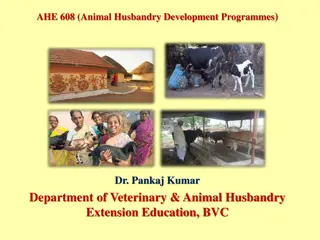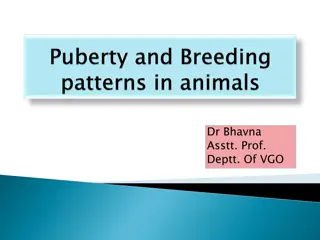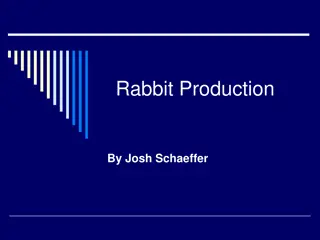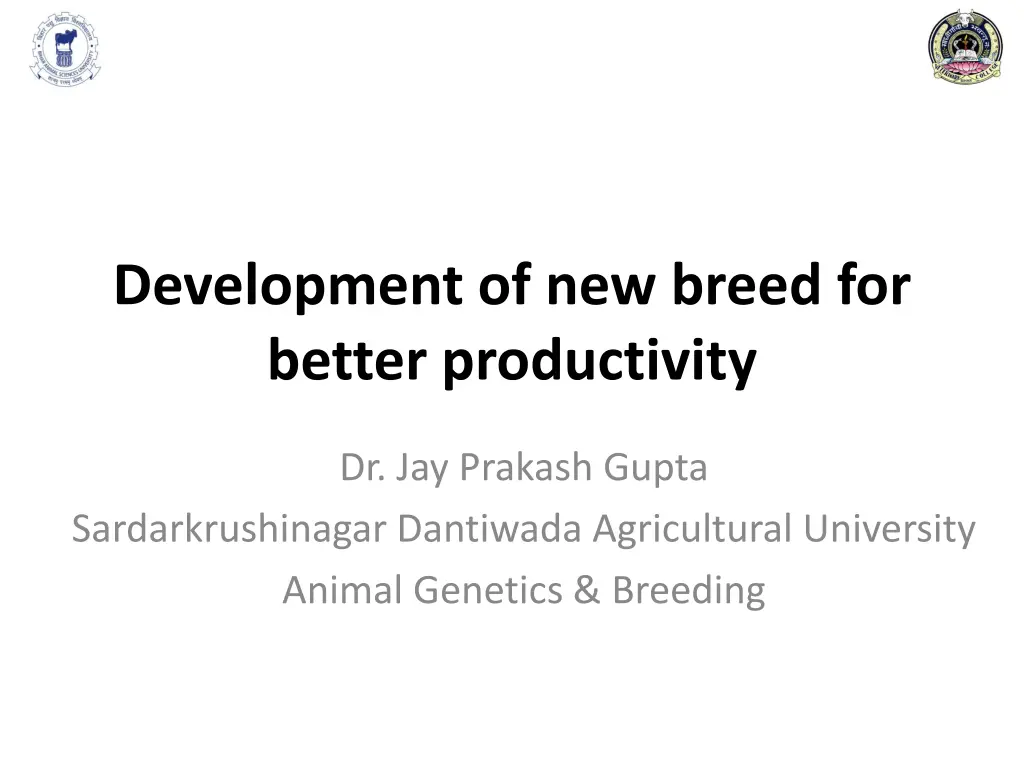
Breed Development Strategies for Productive Livestock
Discover the breeding strategies for enhancing productivity in livestock, including the selection of indigenous and exotic breeds, optimizing exotic inheritance levels, and executing effective breeding plans. Learn from Dr. Jay Prakash Gupta at Sardarkrushinagar Dantiwada Agricultural University.
Download Presentation

Please find below an Image/Link to download the presentation.
The content on the website is provided AS IS for your information and personal use only. It may not be sold, licensed, or shared on other websites without obtaining consent from the author. If you encounter any issues during the download, it is possible that the publisher has removed the file from their server.
You are allowed to download the files provided on this website for personal or commercial use, subject to the condition that they are used lawfully. All files are the property of their respective owners.
The content on the website is provided AS IS for your information and personal use only. It may not be sold, licensed, or shared on other websites without obtaining consent from the author.
E N D
Presentation Transcript
Development of new breed for better productivity Dr. Jay Prakash Gupta Sardarkrushinagar Dantiwada Agricultural University Animal Genetics & Breeding
Choice of breed Indigenous breed: (Foundation stock) Considering the disease resistance, adaptation to local condition and hardiness Exotic breed : Frozen semen technology has made it possible They are mostly unrelated males free from any recessive inherited disease. Should be selected on the basis of result of diallele crossing but it is costly to perform
So, general guideline is that Holstein-Frisian can be used in plains when fodder is available, Jersey can be used in hilly area where limited fodder is available If motive of breed development is milk production, we may use Sahiwal, Red Sindhietc. with high lactation average and exhibited rapid genetic gain through selection If we want to develop and breed for draught capacity in males, Hariana, Ongole, Kangayam can be used
if we want a locally adapted cattle breed, we may use non-descript cattle, but we will get undesirable types of F2 generation progenies, so progenies of Non-descript graded with good draught capacity is better. If motive of breed development is milk production, we may use Sahiwal, Red Sindhietc. with high lactation average and exhibited rapid genetic gain through selection If we want to develop and breed for draught capacity in males, Hariana, Ongole, Kangayam can be used if we want a locally adapted cattle breed, we may use non-descript cattle, but we will get undesirable types of F2 generation progenies, so progenies of Non-descript graded with good draught capacity is better.
Level of exotic inheritance Optimum exotic inheritance should be 50 to 62.5% for milk production and it should be limited to 50% for adaptability, longevity as well as milk production.
Breeding plans After obtaining crossbred progeny in F1 generation, we have to interbred or interse these progenies Intensive selection should be performed from second generation onward by these considerations in mind - for females lactation yield should be criteria - Herd strength should be kept constant - choice of intensity grades will depend on considering maximum genetic gain
Optimum number of females should be selected at different stages: - Retain 60% cows after first lactation - Cull 20% (1/5) cows after second lactation - Cull 12.5% (1/8) cows after third lactation - Cull all cows after fourth lactation except some outstanding ones
10 Thanks! Any questions? You can find me at: @JP_AAtrey jp.prakash01@gmail.com

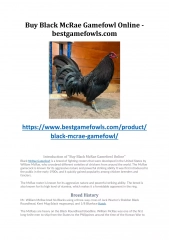
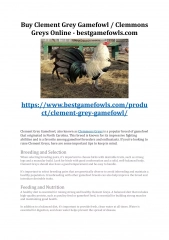
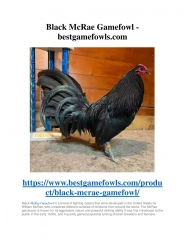

![READ [PDF] Trickster Caught: An Alien Gladiator Romance (Gladiators of the Vaga](/thumb/42236/read-pdf-trickster-caught-an-alien-gladiator-romance-gladiators-of-the-vaga.jpg)








